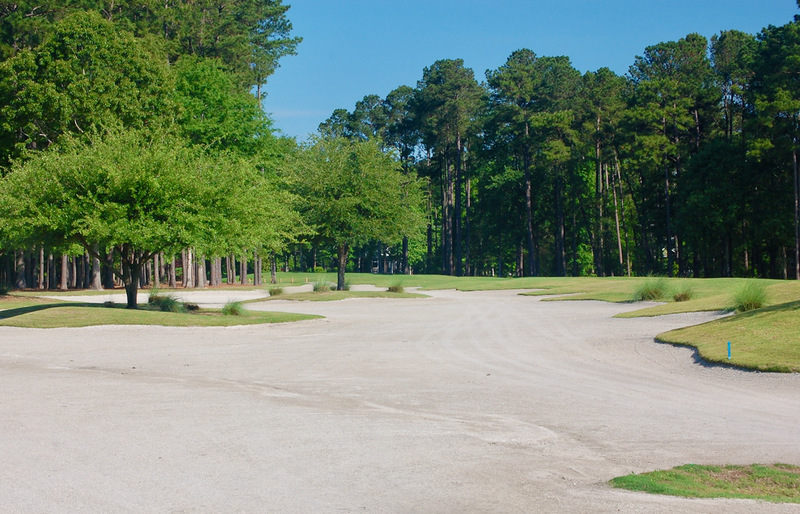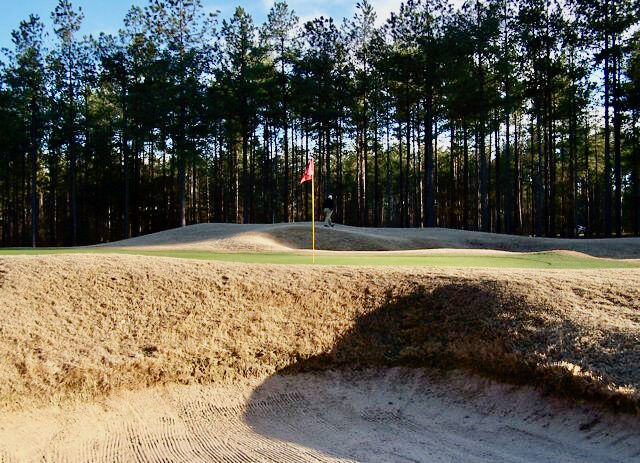Tim was 11 years old when we purchased the condo in 2000. He had first swung a golf club when he was six, and it is fair to say that he developed his game at Pawleys Plantation. With him playing from the short tees at age 12, he and I beat 11 other teams to win our division in the annual Myrtle Beach Father & Son event. Tim later played all four years for his Connecticut high school golf team and all four years at Washington & Lee University. Today, Tim has a scratch handicap and spends his weekdays as a writer for Golfpass, a division of NBC Universal’s Golf Channel, and his Saturdays at a Vero Beach muni where he regularly picks up a few skins and some ample pro shop credit. To say the Jack Nicklaus designed Pawleys Plantation Golf Club has played a large part in his life – his favorite pastime and his career -- would be patent understatement, given that the course is where he learned to play, where he had his first hole in one and where he had his first encounter with non-parentally-guided independence. (The bag-drop attendants started letting him take a golf cart out by himself when he was 12.) He has always loved that golf course and revered Nicklaus’ design.
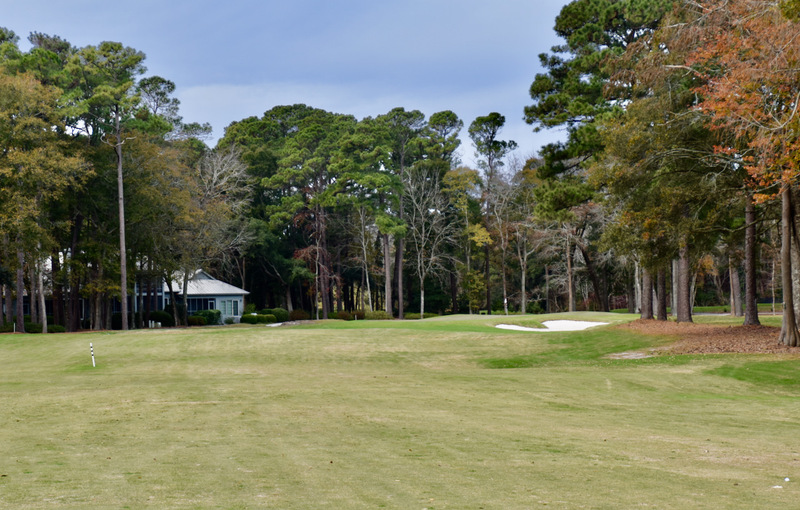 On the original first hole at Pawleys Plantation, a bunker extended from the bottom right corner of this photo all the way to the green.
On the original first hole at Pawleys Plantation, a bunker extended from the bottom right corner of this photo all the way to the green. I, on the other hand, have only occasionally felt completely comfortable with my ability to master the course. First, you must be a good sand player – from both fairway and greenside bunkers – to have any chance of scoring well at Pawleys. That is not me. Nicklaus designed some par fours with 200-yard long bunkers, a few that extend from just beyond the forward tees to greenside. Push or pull your drive into one of those, attempt to play a bold shot and the next two could very well come from the same bunker. Second, as my body aged, the sheer length of the course began to wear me out. (My first round at Pawleys, in 1989, shortly before Tim was born, was eye-opening and entertaining, but I was hitting my tee shots up to 240 yards in those days.)
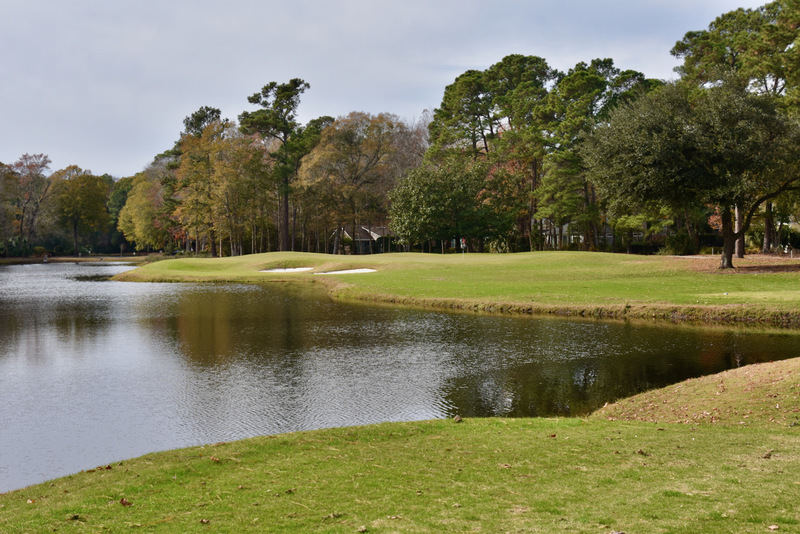 In the redesign, three bunkers were removed on the par 3 third hole; one in the cluster at the front of the green, one well short of the green and adjacent to the water, and one just behind the right side of the green.
In the redesign, three bunkers were removed on the par 3 third hole; one in the cluster at the front of the green, one well short of the green and adjacent to the water, and one just behind the right side of the green. Those who visit these pages know that, today, I encourage my fellow golfers, especially septuagenarians, to play from tee boxes that will accommodate their driving distances on par 4s. If, for example, your normal drive is 180 yards, play the tees for which no par 4 is longer than, say, 340 yards. A 160-yard approach – a 7-wood for me – is long enough. Once I reconciled that my days of 200 yard drives were over and I moved up a couple of tee boxes, I began again to find Pawleys a fair challenge – just in time for some dramatic changes to the course.
Golf times change, and so do golf designers’ points of view. At Pawleys’ 30th anniversary celebration a five years ago, Tim and I listened as Nicklaus himself advocated for significant changes to his original design, not least of them the shrinking and, in some cases, elimination of those tee-to-green bunkers. His reasoning, essentially, was pace of play on a course that is still open to the public and attracts many visiting golfers, as well as the cost of maintaining the bunkers. (Note, our condo sits beside the 15th tee box and I watch, chuckling to myself, at visiting golfers with swings no better than mine playing from the back tees – distance over 7,000 yards, rating 75.0 and slope 150.) Also, over decades of mowing, greens tend to shrink and pull back from their adjacent bunkers. That was definitely the case at Pawleys, and Nicklaus advocated that the greens be restored to their former sizes and, in some cases, embellished a bit.
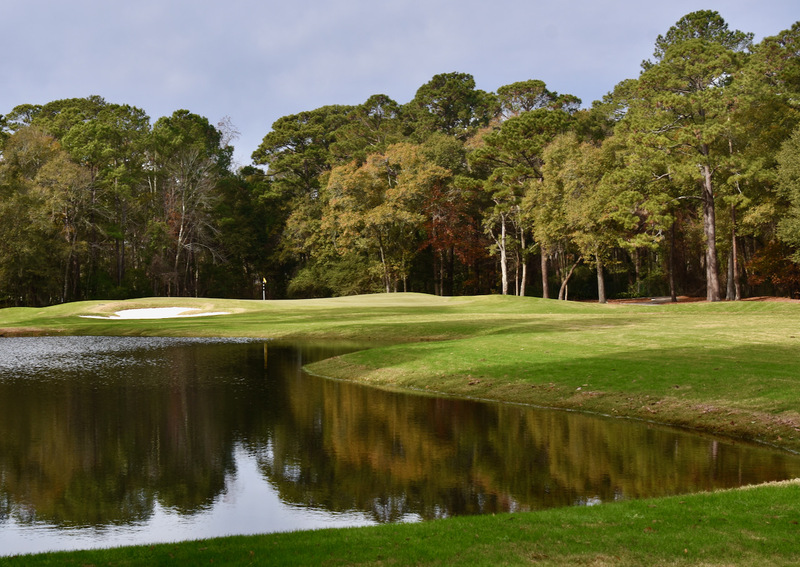 One of the most visually arresting changes at Pawleys Plantation was on the long par 4 second hole, where a swampy area filled with unattractive reeds was cleaned out to create a beautiful pond. A bunker adjacent to the pond and 60 yards short of the green was removed.
One of the most visually arresting changes at Pawleys Plantation was on the long par 4 second hole, where a swampy area filled with unattractive reeds was cleaned out to create a beautiful pond. A bunker adjacent to the pond and 60 yards short of the green was removed.When the work on the course was done a couple of months ago, I was more interested in Tim’s reaction to the changes than I was to my own. Tim got first crack at it in November, a few weeks after it reopened. I won’t try to translate his thoughts here; you can read them for yourself at Golfpass.
Next: Dad takes his first swings at the "new" Pawleys Plantation course.





